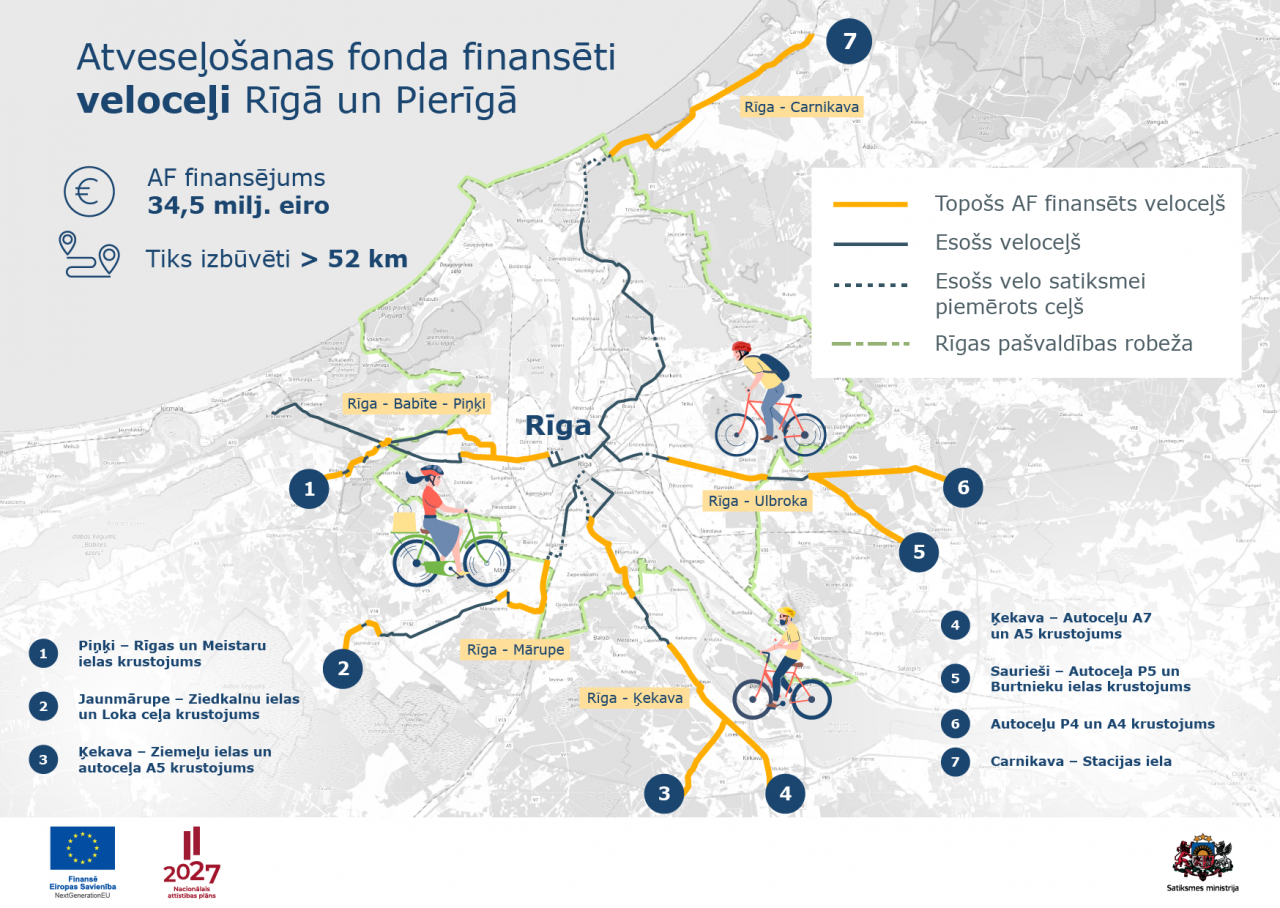The Ministry of Finance (MoF) has indicatively gathered the projects filed by the line ministries and independent authorities for the new European Union (EU) budget facility - Recovery and Resilience Facility. The indicative total amount, in which the projects have been filed, comprises 7.5 billion euros. After gathering the received proposals, the MoF will prepare a consolidated offer for further discussions. It is planned that a working group will already start analysing and assessing the submitted projects next week.
The Minister for Finance Jānis Reirs points out: “The new facility is not only a large opportunity, but also a large responsibility to do everything in the highest quality, within a tight timeline, in order not to lose the opportunity to receive the funding and to already ensure the commencement of reforms and investment contributions in 2021”.
The purpose of the facility is to support the reforms and investments, specifically those related to the transition to a green and digital economy, as well as to reduce the social and economic impact caused by the crisis. It is important to note that the funding will be intended for promoting structural reforms and the payments will be linked to the achievement of particular interim and ultimate goals of the reforms, and not to the performed contributions, as it is in the projects of the EU structural funds.
The work is organised in 6 directions of reforms:
• Climate change and sustainability;
• Digital transformation;
• Economic transformation and productivity reform;
• Health;
• Reducing inequality;
• Rule of law.
The funding is available for the period till the middle of 2026 and, according to MoF estimates, the Latvia’s envelope guaranteed allocation of EU funding would comprise approximately 1.6 billion euros, while the floating part would comprise approximately 0.3 billion euros. Additionally, Latvia would indicatively have loans available in the amount of another 2.3 billion euros.
The plan will be developed in cooperation with the European Commission, in close linkage to the received Council recommendations. The plan of the Recovery and Resilience Facility developed by each Member State will be submitted for approval to the European Commission and the EU Council.
There is no EU regulation approved yet, nor are there any clear guidelines received from the European Commission as to the content of the plan, therefore it is necessary to preserve flexibility in the development of the plan.
Officially the plan will be submitted to the European Commission after the regulation comes into effect, namely, indicatively, in the beginning of 2021, but already in October this year it is expected to submit the draft plan to the Cabinet of Ministers for review.
Criteria and conditions for introduction will be developed in 2021, after the plan is approved.
The calculation of funding for subsidies/grants is being divided into two parts - 70% of the total allocation will be granted for the period till 31 December 2022, considering the predefined allocation key, taking into account the number of population, gross domestic product (GDP) per capita and the average unemployment rate over the period of last five years, as compared to the EU average indicator for the time period from 2015 till 2019.
The remaining 30% will be available for the period from 1 January 2023 till 31 December 2023. The final maximum amount will be calculated by 30 June 2022, by assessing the real changes in GDP in the year 2020-2021.
